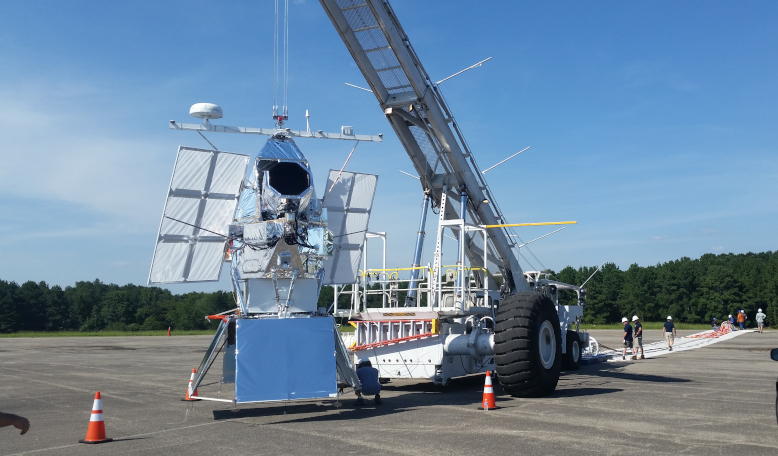A new kind of astronomical telescope that is capable of taking high-resolution images rivalling those of the Hubble Space Telescope, will be lofted 40 kilometres high above the atmosphere next year by a helium balloon the size of a football stadium.
Known as the The Superpressure Balloon-borne Imaging Telescope, or SuperBIT for short, the telescope is being built by Durham, Toronto and Princeton Universities in conjunction with NASA and the Canadian Space Agency.
It’s aim is to capture ancient light that has been traversing the cosmos before it passes through the Earth’s swirling, turbulent atmosphere.
Without our atmosphere we could not survive, but when it comes to studying the Universe, molecules such as water vapour in our skies can block out or attenuate incoming radiation making it difficult to observe the light from distant galaxies.
To overcome the effects of the atmosphere, astronomers either put telescopes in space or build observatories at high altitude, but this can be extremely costly.
A cheaper alternative is using balloons. Many high-altitude balloons have been used for science studies before, but this more cost effective approach comes with its own downside; balloons stay aloft for only a few nights, which is not enough time for an an astronomical telescope to gain the extraordinary pointing stability it needs to take sharp pictures.
SuperBIT on the other hand has been designed specifically with this caveat in mind. Its 0.5 metre diameter mirror will be carried by a superpressure helium balloon developed by NASA that has a volume of 532,000 cubic metres; this will be enough to keep the balloon sailing through the skies for months.
Scheduled to launch on the next long duration balloon, from Wanaka, New Zealand, in April, SuperBIT will cruise the seasonally stable winds and circumnavigate the Earth several times.
During this time it will image the sky all night, then use solar panels to recharge its batteries during the day.
SuperBIT has already taken to the skies to perform a number of tests. During its final test flight in 2019 it demonstrated a variation of less than one thirty-six thousandth of a degree for more than an hour - a stability that should produce images as sharp as those taken with Hubble.
An added advantage of carrying a telescope on a balloon is maintenance. The Hubble Space Telescope will not last forever and when it does succumb to problems, like it has recently for the past month, repairs have to be done remotely from the ground or in space by astronauts.
But, as SuperBIT is fastened beneath a balloon, it can be brought back to its designers to be tweaked and improved when needed.
“New balloon technology makes visiting space cheap, easy, and environmentally friendly,” said Mohamed Shaaban, a PhD student at the University of Toronto who is working on the telescope. “SuperBIT can be continually reconfigured and upgraded, but its first mission will watch the largest particle accelerators in the Universe: collisions between clusters of galaxies.”
Convenience aside, the telescope is also equipped to take images in the visible-to-near-UV bands (300-900 nm) of the electromagnetic spectrum.
The Euclid observatory due to launch next year can only take images in a single optical band, and the James Webb Space Telescope due to launch this autumn is limited to infrared wavelengths.
This means SuperBIT will be the only facility in the world capable of high-resolution multicolour optical and ultraviolet observations.
Although SuperBIT is well suited for experiments relating to solar planet spectroscopy and exoplanet studies, when launched next year, its first science goal is to measure the properties of dark matter particles.
Although dark matter is invisible, astronomers can map the way it bends rays of light via a technique known as gravitational lensing.
SuperBIT will use strong and weak lensing to map out the distribution of dark matter around hundreds of galaxy clusters and test whether the elusive material slows down during collisions.
“Cavemen could smash rocks together, to see what they’re made of,” added Prof. Richard Massey of Durham University. “SuperBIT is looking for the crunch of dark matter. It’s the same experiment, you just need a space telescope to see it.”











